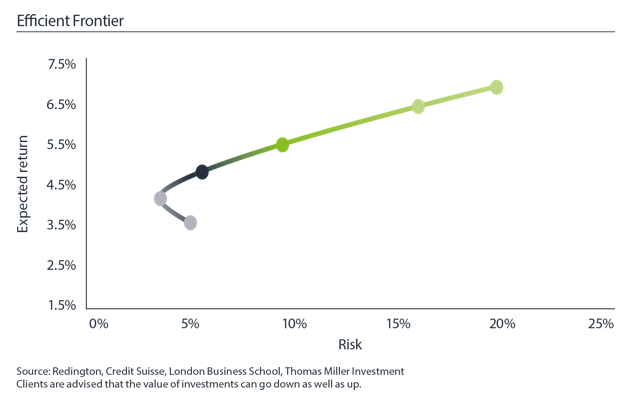The first stage of constructing a portfolio is putting in place the long term asset allocation framework which will best deliver the desired returns within the required risk parameters. We deploy an efficient frontier methodology using statistical modelling techniques to combine assets for the optimal risk/reward characteristics. These strategic allocations are designed to maximise returns for any given level of risk.

Our investment services
We offer investment solutions for a wide range of clients across a broad selection of asset classes.
Each point on the frontier represents a specific combination of assets running from 100% defensive to 100% growth. The frontier shows those combinations where risk is minimised for a given level of return. Investing below the line is sub-optimal and gaining more return at the same risk level (moving above the line) is not sustainable over the investment cycle.
Our core belief is that managing a globally-diversified portfolio will maximise return per unit of risk – diversification is our most powerful tool for ensuring the resilience of our portfolios. The efficient frontier elegantly demonstrates the power of diversification in that by adding some growth assets to a 100% defensive portfolio, it is possible to achieve a higher level of return at a reduced risk.
Once the long term strategic asset allocation has been decided, Thomas Miller optimises portfolios through a combination of tactical asset allocation and underlying stock selection.
The mix of assets held in each portfolio will depend on your return objective and risk tolerance. In general, equities offer the potential of higher returns but with a more volatile return profile, while bonds tend to offer a lower potential return, but with more stable return profile. Conservative, or more defensive portfolios – those portfolios with greater focus on capital preservation, a lower return objective and lower tolerance for risk, will have a higher allocation to bonds. More aggressive portfolios – those growth-orientated portfolios, with a higher return objective and greater tolerance for risk will have a higher allocation to equities.
Talk to us
Please get in touch if you have any questions, our team would be happy to help.

